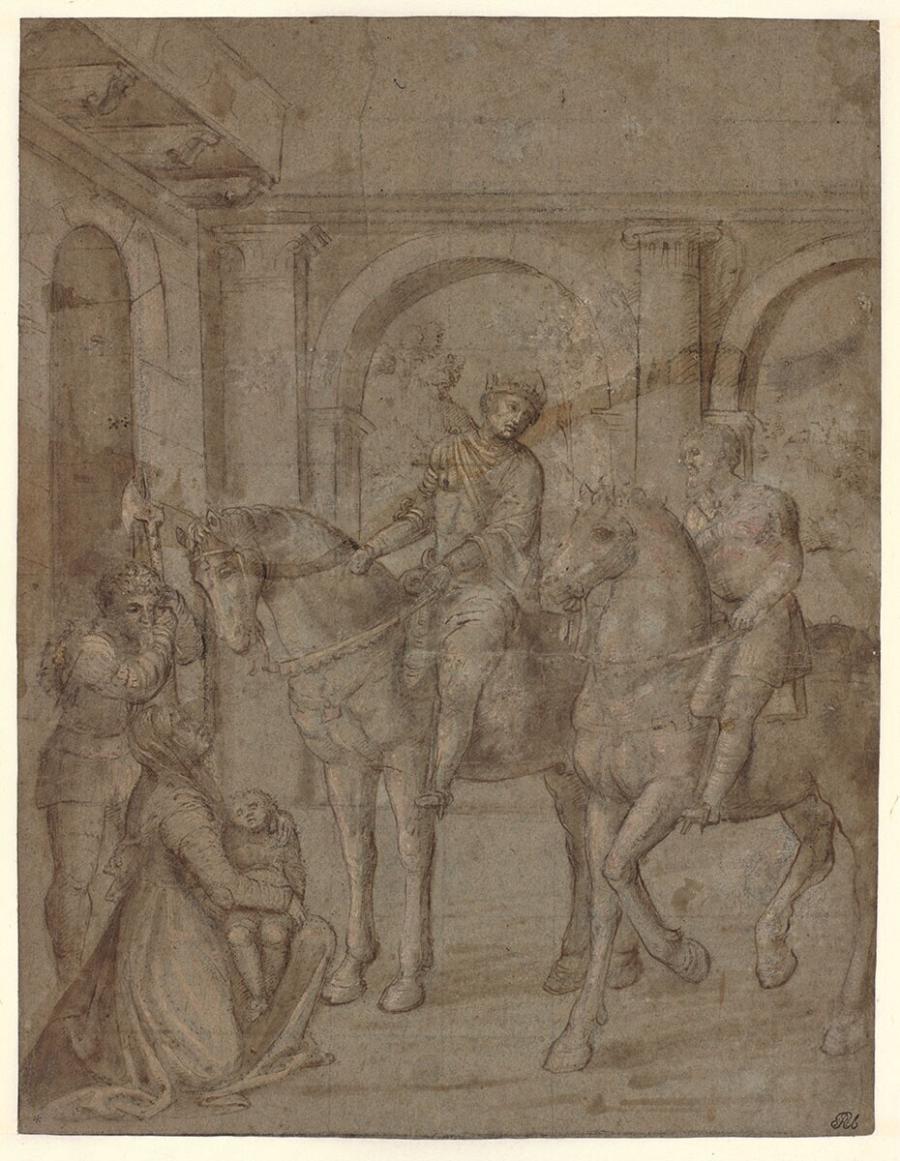Specifications
| Title | The Justice of Trajan |
|---|---|
| Material and technique | Black chalk, pen and brown ink, brown wash, white heightening, squared |
| Object type |
Drawing
> Two-dimensional object
> Art object
|
| Location | This object is in storage |
| Dimensions |
Height 351 mm Width 270 mm |
|---|---|
| Artists |
:
Vincenzo Foppa
: Moretto da Brescia (Alessandro Bonvicino) |
| Accession number | I 360 (PK) |
| Credits | Loan Stichting Museum Boijmans Van Beuningen (former Koenigs collection), 1940 |
| Department | Drawings & Prints |
| Acquisition date | 1940 |
| Creation date | in circa 1450-1530 |
| Watermark | poor visibility (vH, 10?P) |
| Inscriptions | ‘1564’ (verso, above left, pen), (verso, above right pen and black ink) |
| Collector | Collector / Franz Koenigs |
| Mark | R. Udney (L.2248), F.W. Koenigs (L.1023a) |
| Provenance | Robert Udny (1722-1802, L.2248); his sale (Philipe) 04-10.05.1803, probably in lot 302 (Moretto di Brescia, for BP 0/8/0); Anon. (star-shaped mark, not in Lugt); - ; Art dealer R.W.P. de Vries Jr., Amsterdam; Franz W. Koenigs (1881-1941, L.1023a), Haarlem, acquired in 1928 (Alessandro Bonvicino Moretto); D.G. van Beuningen (1877-1955), Rotterdam, acquired with the Koenigs Collection in 1940 and donated to Stichting Museum Boijmans Van Beuningen |
| Exhibitions | Amsterdam 1929, nr. 243 |
| Research |
Show research Italian Drawings 1400-1600 |
| Literature | Amsterdam 1929, no. 243 (Moretto); Van Schendel 1938, p. 86, fig. 77 |
| Material | |
| Object | |
| Technique |
Perforate
> Punctured
> Subtractive techniques
> General technique
> Technique
> Material and technique
Perforate
> Punctured
> Subtractive techniques
> General technique
> Technique
> Material and technique
Highlight
> Painting technique
> Technique
> Material and technique
Brown wash
> Washing
> Wash
> Drawing technique
> Technique
> Material and technique
|
| Geographical origin | Italy > Southern Europe > Europe |
| Place of manufacture | Brescia > Italy > Southern Europe > Europe |
Do you have corrections or additional information about this work? Please, send us a message
























